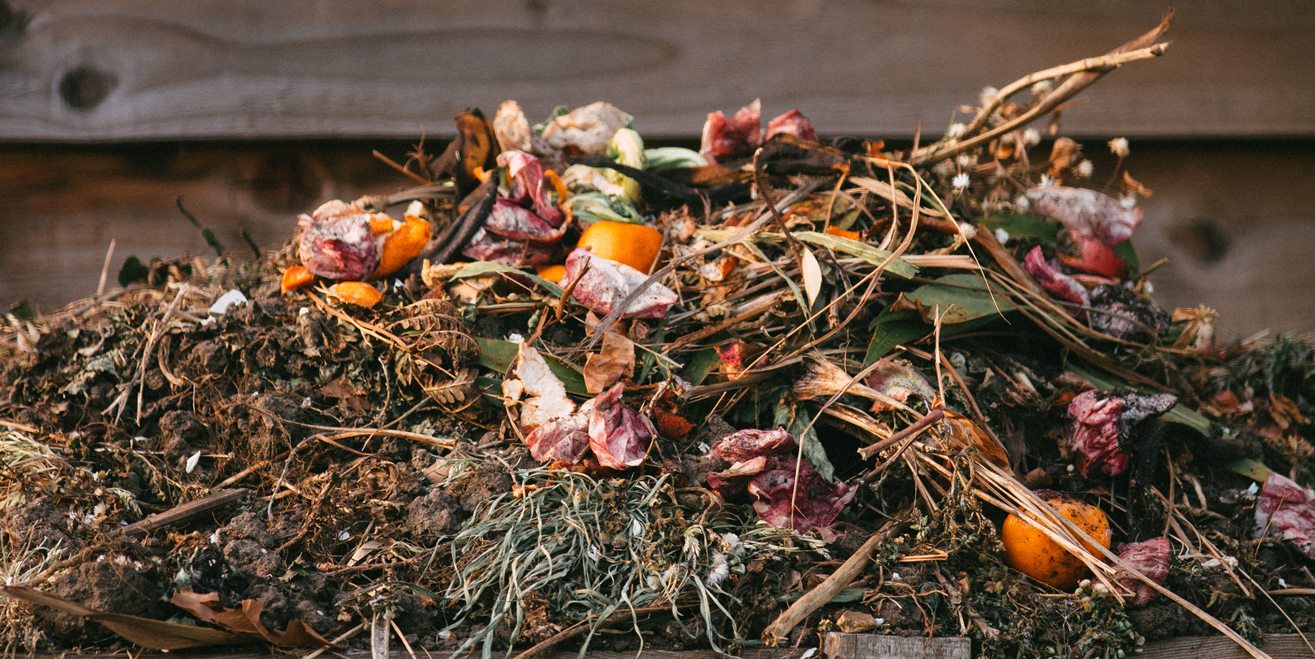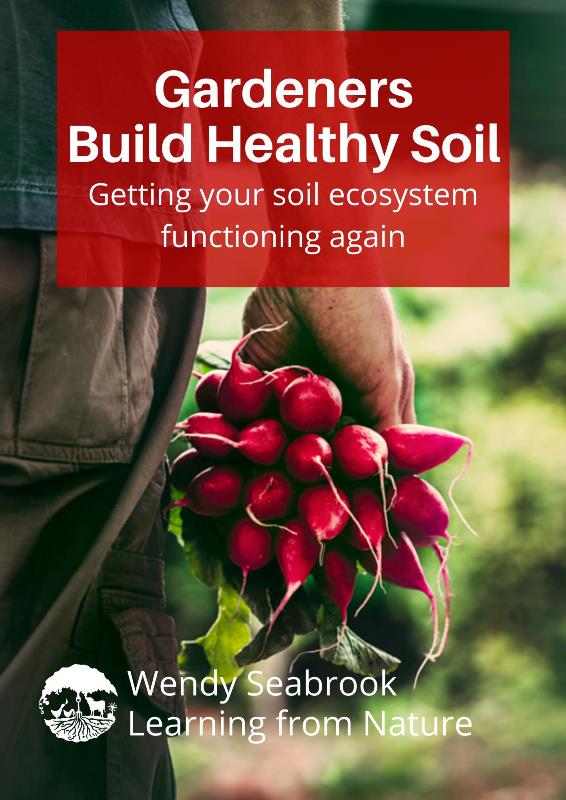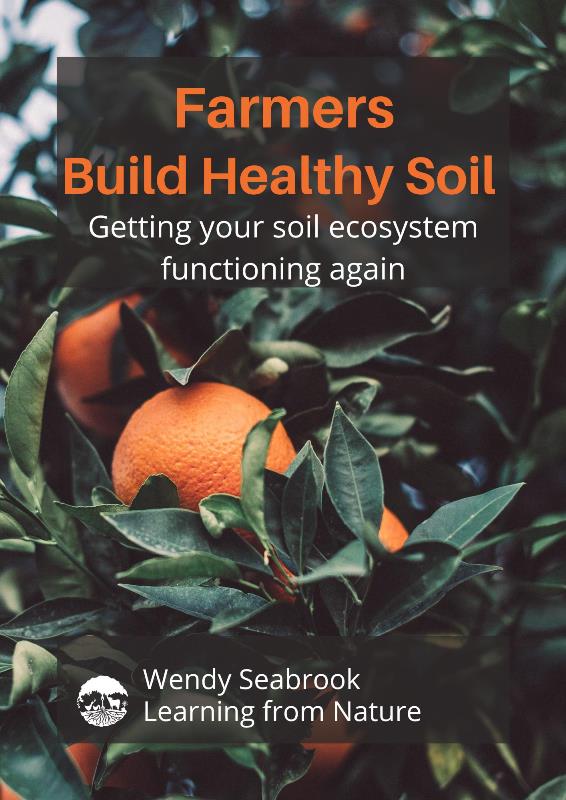Compost and biological fertilisers can be regenerative practices. But it depends on how we use them.
We can improve organic matter levels, microbial diversity and activity in our soils by switching from chemical to organic and biological inputs, or by increasing the compost and bio-fertilisers we apply. But these benefits are short-lived without regular applications. This is because microbes in compost and bio-fertilisers don’t survive for long unless our soil provides suitable living conditions.[1] Plus, only a small proportion of the organic materials from these above-ground inputs are retained long-term as organic matter in our soil.[2][3]
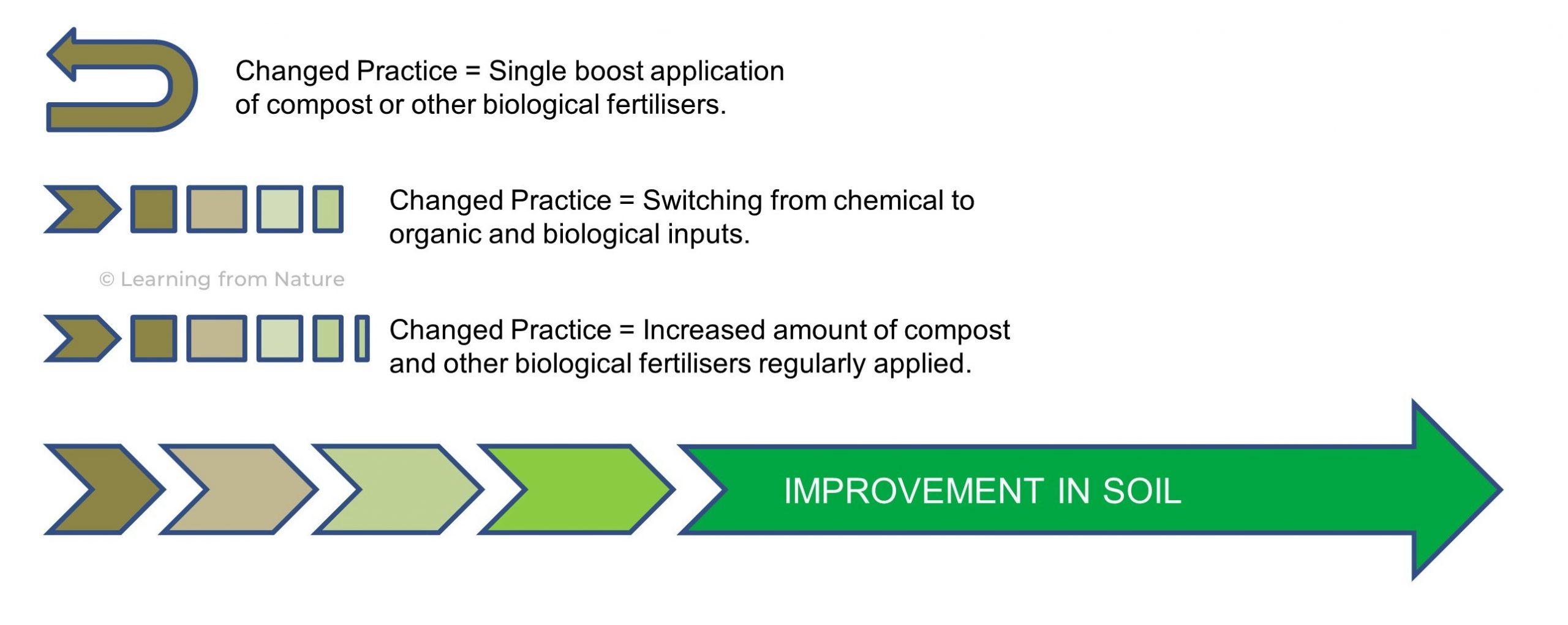
Instead of relying on compost and bio-fertilisers to maintain the health of our soil, we are better off using them to help us achieve long-term improvements by repairing our soil ecosystems.
But this necessitates changing how we manage our veggie gardens, orchards and fields.
By creating ways to grow more plant biomass and integrate livestock of all shapes and sizes, we increase the supplies of root exudates, root tissues and other organic waste materials from plants and animals to feed our soil organisms. They can then use their considerable on-the-job training to repair our soil ecosystems.
The role of organic and biological inputs is to help boost plant growth initially by supplying extra organic materials and broadening the microbial skill set!
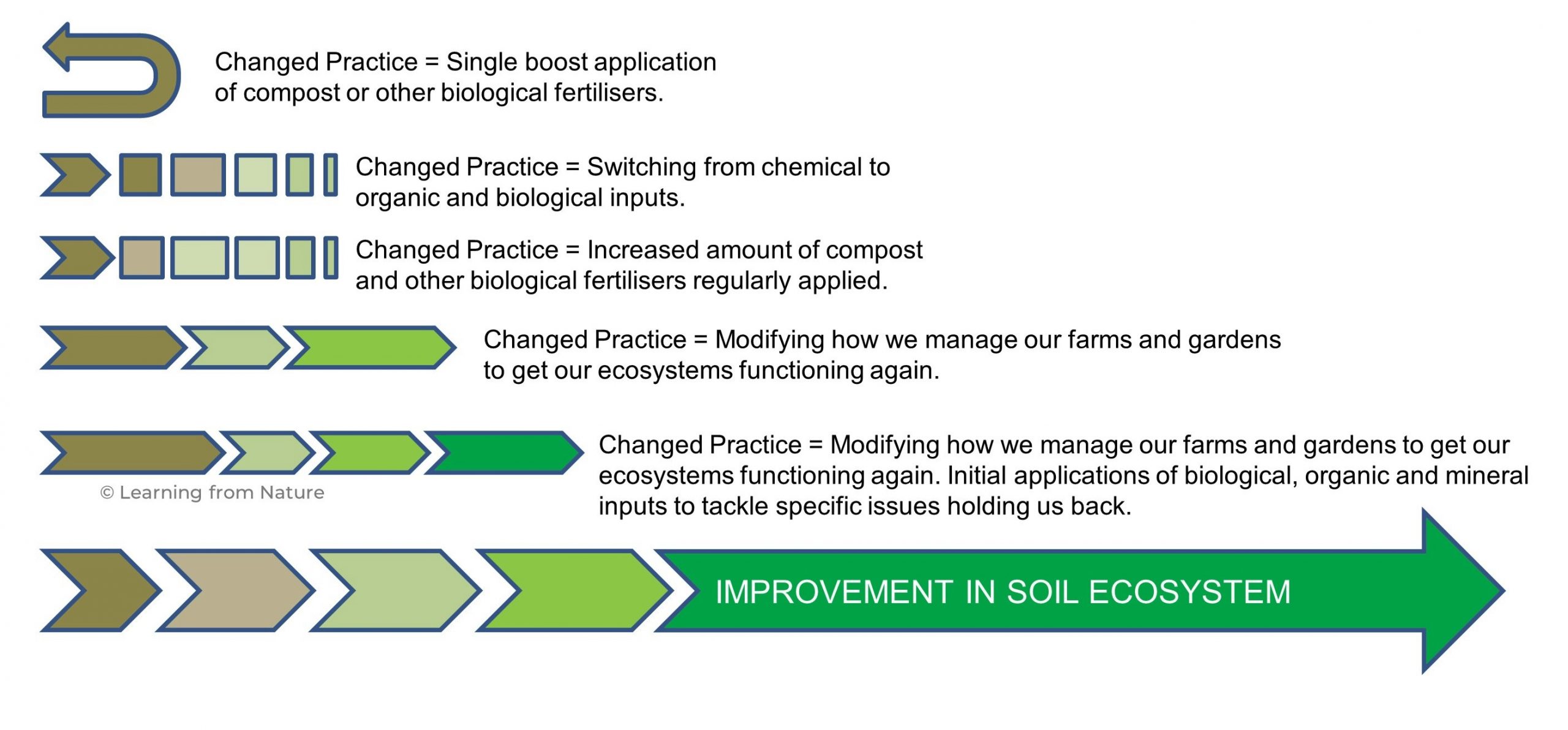
With this eco-logical approach, our focus becomes managing our farms and gardens to provide our microbes and other soil organisms with the resources to repair our soil ecosystems. We replace compost and bio-fertilisers with functioning soil ecosystems and get off the treadmill of applying inputs!
Breaking your Compost Addiction!
Recommended articles –
- What is Healthy Soil?
- How to Build Healthy Soil – Eco-logically
- How to reduce fertiliser costs
- Grow food Eco-logically
Or better still, get practical advice to repair the soil ecosystems on your land –
References
[1] Lavelle, P., Moreira, F. & Spain, A., 2014, Biodiversity: Conserving biodiversity in agroecosystems. In: van Alfen, N., et al., (Eds.), Encyclopedia of Agriculture and Food Systems, Vol 2. Elsevier Publishers, San Diego, pp. 41-60.
[2] Michael W. I. Schmidt, Margaret S., et al., 2011, Persistence of soil organic matter as an ecosystem property, Nature 478
[3] Daniel P. Rasse, Cornelia Rumpel & Marie-France Dignac, 2005, Is soil carbon mostly root carbon? Mechanisms for a specific stabilisation, Plant and Soil (2005) 269: pp 341–356
Featured image – Edward-Howell
